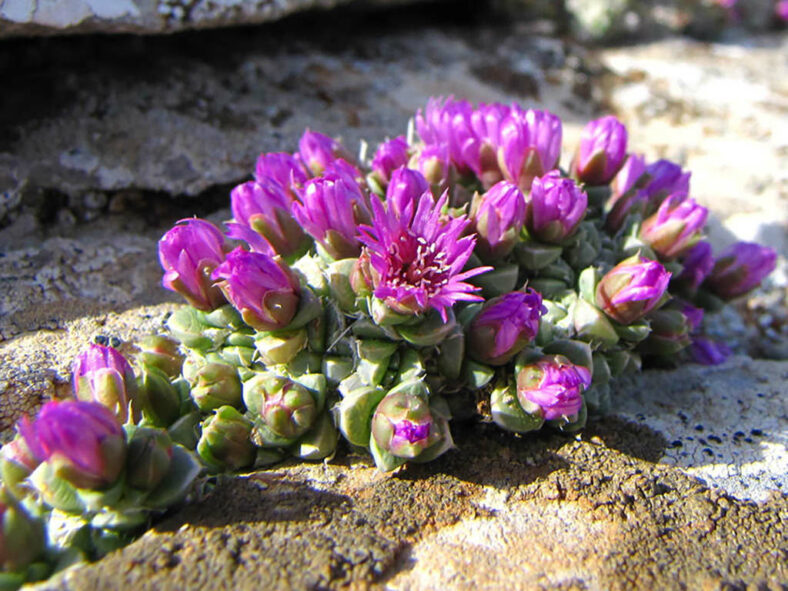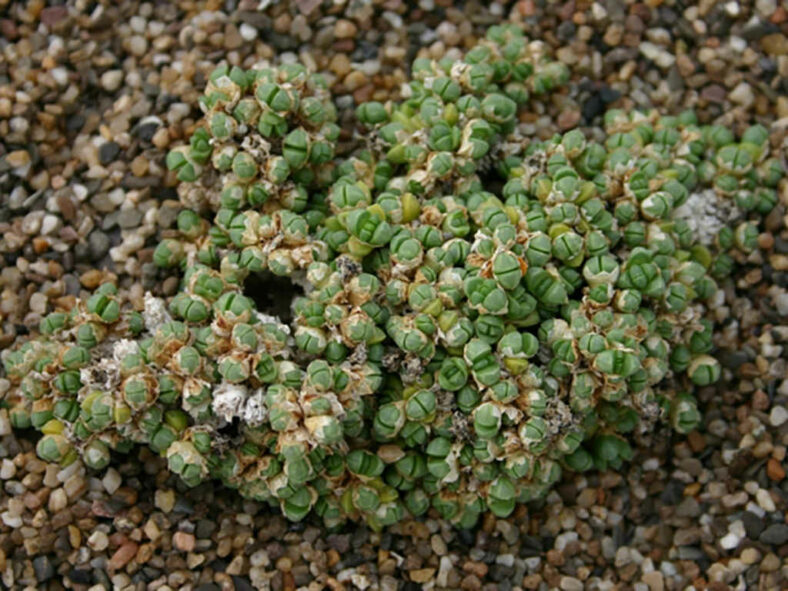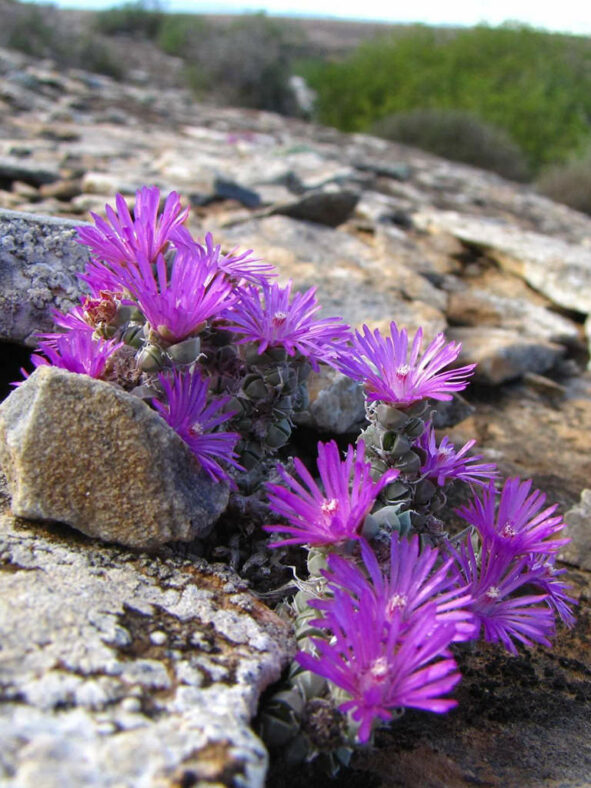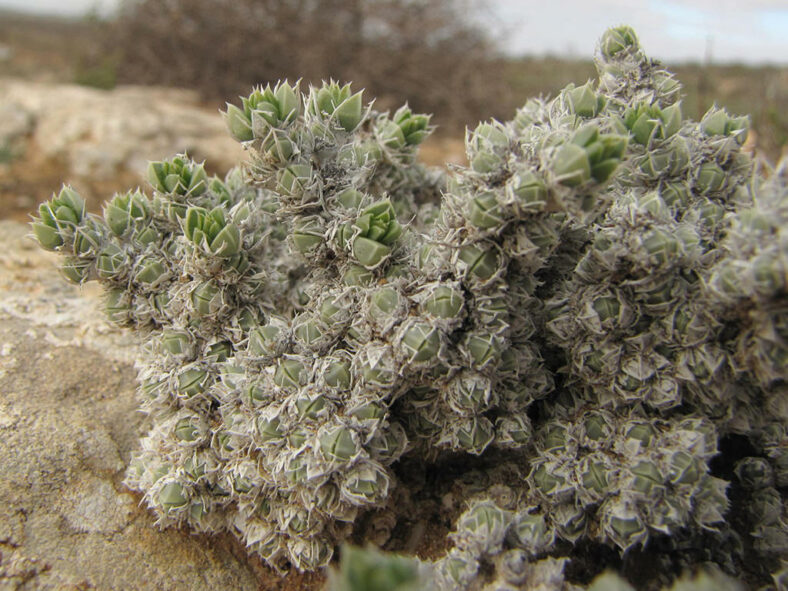Antimima fenestrata is a unique succulent plant that forms attractive, compact shrublets, sometimes resembling miniature trees.
Scientific Name
Antimima fenestrata (L.Bolus) H.E.K.Hartmann
Synonym(s)
Ruschia fenestrata
Scientific Classification
Family: Aizoaceae
Subfamily: Ruschioideae
Tribe: Ruschieae
Genus: Antimima
Etymology
The specific epithet "fenestrata" (pronounced fen-ess-TRAY-tuh) means "having one or more windows; fenestrated" and refers to the translucent margins and keel of the leaves.
Origin
Antimima fenestrata is native to South Africa. It grows in yellow, loamy soil or crevices on white quartz, marble, or limestone slopes in the Knersvlakte region of Western Cape province.
Description
Antimima fenestrata is a compact succulent shrublet with thick, fleshy, tightly packed leaves on short branches. It can grow up to 4.8 inches (12 cm) tall. The leaves are gray-green with translucent margins and keel and end in a short spine. The old leaves form a dry white sheath around the new pair of leaves that appear in summer.
During the winter, Antimima fenestrata produces mauve to magenta flowers that can reach a diameter of 0.6 inches (1.5 cm). The fruits are woody capsules with five valves that open when wet and close when dry.

How to Grow and Care for Antimima fenestrata
Light: Antimima fenestrata requires bright light but not too much direct sunlight. So, a windowsill that receives 4 to 5 hours of direct sunlight in the morning and partial shade in the afternoon will be a perfect spot for indoor growing.
Soil: The plant thrives in porous soil, allowing the water to drain away quickly. Therefore, use commercial soil for succulents or make your own well-draining mix.
Temperature: High temperatures are not a problem as long as there is plenty of fresh air, but this plant is not cold-hardy. It grows best in USDA Plant Hardiness Zones 9b to 11b, with average minimum winter temperatures ranging from 25 to 50 °F (-3.9 to 10 °C).
Watering: To keep your Antimima fenestrata healthy, it is most important to know when, how much, and how often to water it. During the dormant period, usually in summer, the plant requires little or no water. From fall to spring, water it thoroughly but allow the soil to dry between waterings.
Fertilizing: As long as you repot this plant every two years, it does not need fertilizer.
Repotting: Even if your plant can stay happy in the same pot for years, you can repot it once in a while to give it more space anytime during the growing season. However, the best time is at the beginning of the growing season.
Propagation: One simple way to propagate this plant is by stem cuttings during the growing season. Another option is to start it from seeds by sowing them in well-draining soil during the fall.
Learn more at How to Grow and Care for Mesembs.
Toxicity of Antimima fenestrata
Antimima fenestrata is considered non-toxic and safe around kids and pets.
Links
- Back to genus Antimima
- Succupedia: Browse succulents by Scientific Name, Common Name, Genus, Family, USDA Hardiness Zone, Origin, or cacti by Genus
Photo Gallery
Click on a photo to see a larger version.


